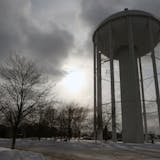"It is a fire that wants to burst forth, and it could not care less about what we are doing up here," said Werner Herzog, lugubrious director, in a terrifying film about volcanoes. He is the guy who also said: "I believe the common denominator of the universe is not harmony but chaos, hostility and murder."
He needs to spend a little time in Hawaii, where people who live atop volcanoes have handled geologic volatility for centuries with understanding and even affection, even as they pack up now and then and get out of the way. They keep calm and hele on, to use the Hawaiian word that means to move. They go with the flow.
The flow these days is happening along the East Rift Zone of Kilauea, one of five volcanoes that make up the island of Hawaii. Kilauea has been erupting more or less continually since January 1983. There are cracks in the earth from which molten rock and fire and toxic gases are spewing. Homes, streets and cars are being swallowed by lava, and thousands of people have evacuated subdivisions in the Puna District, the island's southeast corner. It is hard to predict where the lava is going next, and no way to know when it will end.
But while this is a disaster, it is not the Hollywood or Herzog kind. Kilauea is not Vesuvius, and Leilani Estates is not Pompeii.
"It's a disaster you can walk away from," my cousin Quince Mento told me. He is a former civil defense administrator for Hawaii County and firefighter. I checked in with him last week after seeing the latest footage online: the spattering orange lava, the viral time-lapse video of a flow eating a parked Mustang, the pillar of pink smoke rising from Puna, about a half-hour's drive south of Hilo, the island's biggest town.
"At least in Hilo, while everybody has a lot of empathy, it's business as usual here," Quince said. He said that although first responders would be working exhausting shifts for the duration of evacuations and relocations, the emergency was highly localized.
As with Western wildfires and California landslides, this is partly a problem of people building homes in places they come to regret. Developers in the 1950s and '60s carved up agricultural land in Puna and gave the subdivisions names like Hawaiian Paradise Park, Tiki Gardens and Leilani Estates. The lots were cheap and still are. Parts remain lushly forested. Utilities like water and electricity are spotty.
A long-established population of native Hawaiians was joined by a flow of mainland transplants looking for a tiki paradise. Which they found, until some of them realized that they had to buy their fire insurance from Lloyd's of London. For decades the U.S. Geological Survey has mapped the severity of volcano hazards across the island. A big, long strip of Puna lies in Zone 1.



